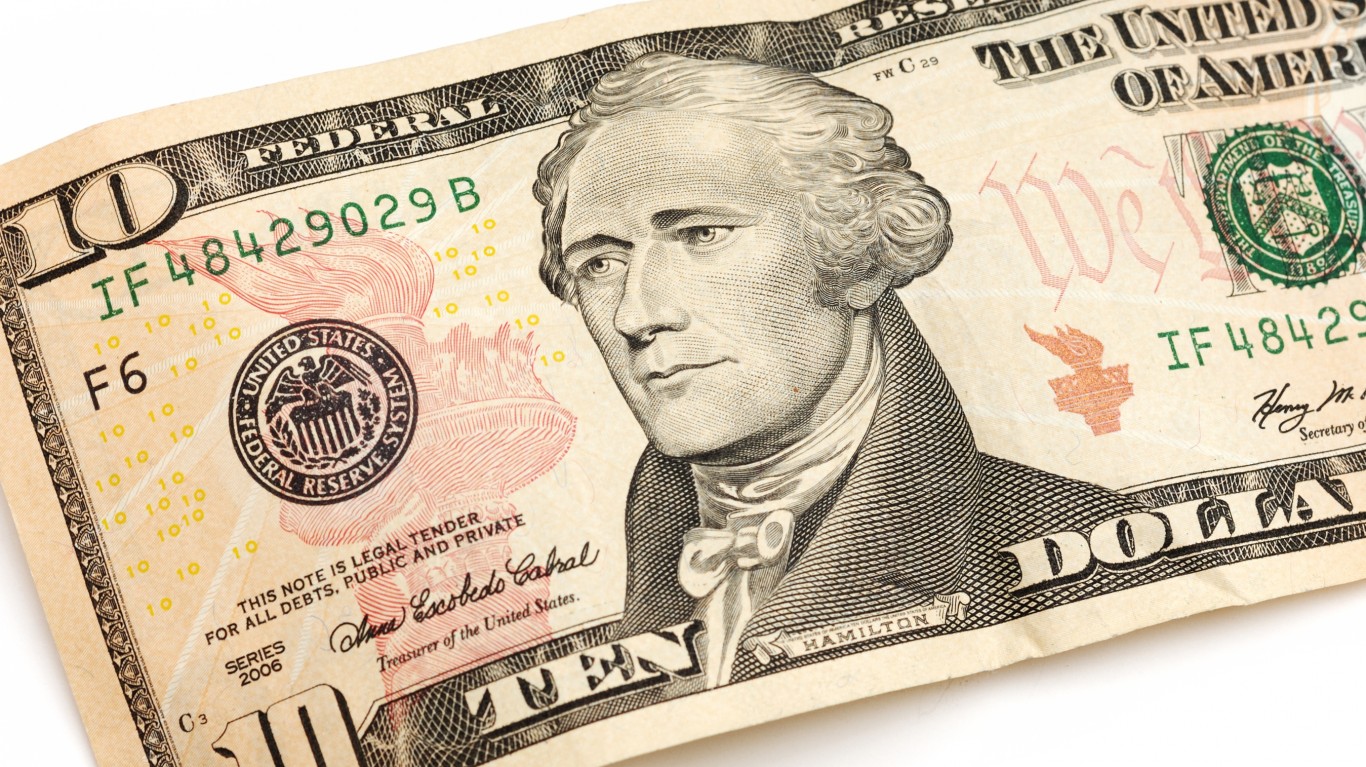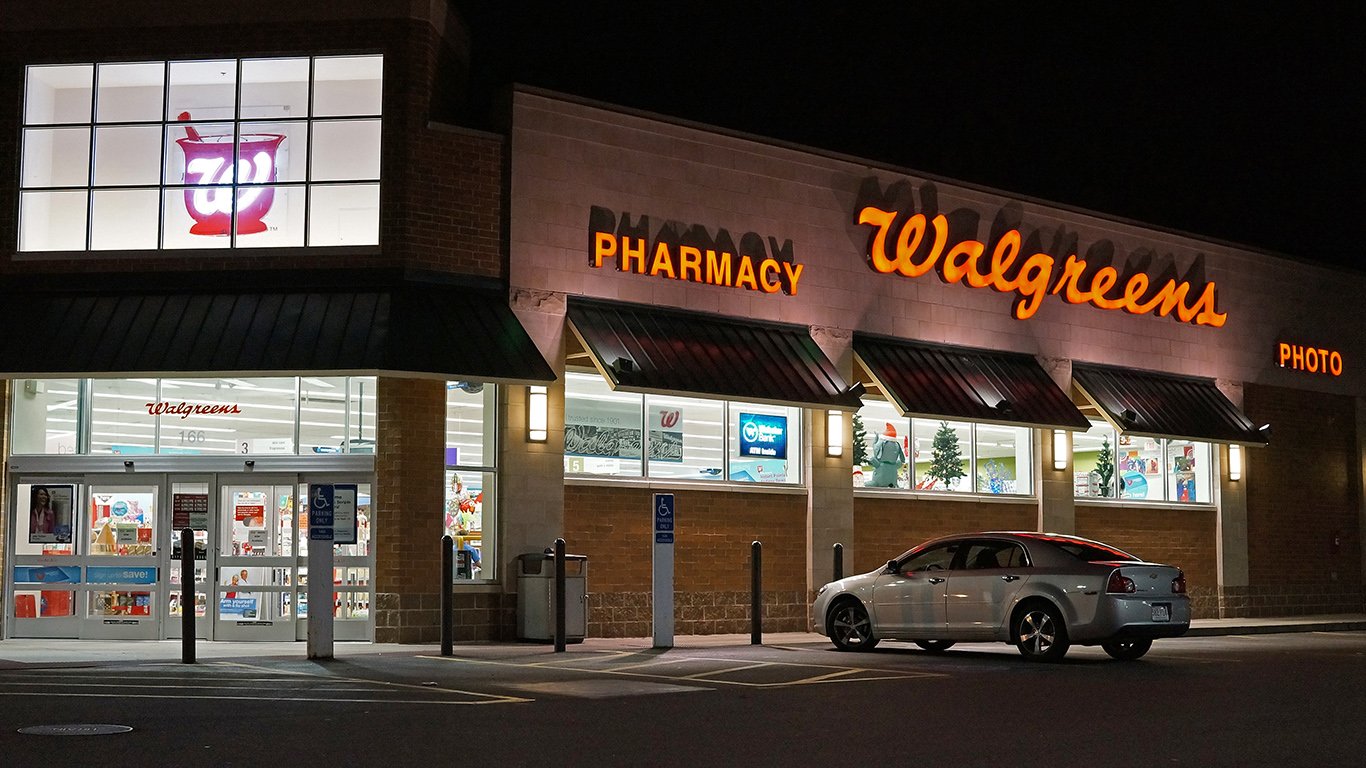

The year 2017 has not been a normal one at all for investors. The bull market is eight years old, and the Trump bump from late 2016 hasn’t been met by any serious stock market sell-off in 2017. The markets have overcome many pressures and risks in recent months and years, and investors have found a reason to buy the stock market every time any weakness has been seen. As the summer approaches, many investors fear that a stock market correction could come at almost any time. This is when defensive stocks can come into play.
Stocks have risen well over 200% from their V-bottom lows in March of 2009. The pro-growth economic Trump policies are still potentially months away from being finalized, and many Americans feel that they may not come to fruition at all. There are many skeptics about the likelihood and magnitude of what tax plans the Trump administration will actually get passed. Economic growth under gross domestic product (GDP) remains somewhat muted. Some of the strong January and February economic readings have been followed by more tempered growth. The Federal Reserve still wants to keep raising interest rates. And international tensions remain high.
Does all this add up to a big stock market sell-off being imminent? Maybe, but maybe not. The stock market has yet to get hit by any silver bullet that has managed to kill the bull. Still, there is always the mantra of “Sell in May and go away” that has to be considered. Summer is traditionally a time that the stock market is not at the top of investors’ minds and goals. They call it the “summer doldrums” for a reason.
24/7 Wall St. has reviewed many defensive stocks over the years, and the class of defensive stocks ahead of the summer of 2017 has been tailored to the market as it stood at the time. While defensive stocks are meant to act as a safe haven during slow-downs or sell-offs, investors do have to know that a sharp 5%, 10% or stronger drop in a very short time generally will not be good for any type of stock — and that means defensive stocks too! The goal in 2017 was to find stocks that are expected to still rise but also that are expected to not sell off as much as the broad market if an overdue sell-off does come to the stock market.
To qualify as a truly defensive stock, these are generally in health care, food, water, tobacco, telecom, utilities, consumer products and other items that consumers have to have whether or not the economy is good. They generally all have stable earnings and growing dividends, and none of the companies are new ones in technology or with speculative primary business strategies. These defensive stocks would also all qualify under a “widows and orphans” suitability test that brokers have to consider when it comes to evaluating if investors should own stocks.
In order to derive the most attractive defensive stocks for investors ahead of the summer of 2017, we screened close to 50 of our traditional defensive stocks. After finding eight stocks in industries and offering truly defensive positions, adequate values and solid dividends, most of these companies still trade at a discount to the consensus analyst price target from Thomson Reuters.
One thing investors need to at least consider is what to expect if their anticipated stock market correction doesn’t come this year. Defensive stocks can rise (some handily) in a rising stock market, but growth is likely to trump defensive stocks if the stock market continues to rally into the summer and into 2018 and beyond.
These eight stocks were not the only ones that may have qualified, but they did fit the bill on almost every front, with significant market caps, solid dividends, raised dividends, upside from analysts and more. Here are the eight most attractive defensive stocks for investors seek refuge in for the summer of 2017.
Altria
Altria Group Inc. (NYSE: MO) is the king of domestic tobacco with very limited currency exposure in a post–Philip Morris International world. It seems hard to endorse tobacco companies when their yields are smaller than telecom stocks and when the pressure to get healthier keeps growing. The stark reality is that states and cities rely heavily on taxes from tobacco sales, so much so that they never want to totally kill the tobacco companies. The move to vaping actually has even helped keep tobacco sales up because vapers sometimes want that old-school cigarette burn. Altria has vaping from NuMark and Green Smoke. It also has U.S. Smokeless Tobacco, and it has the John Middleton business for cigars and pipe tobacco.
Altria shares traded recently at $71.60, with a consensus analyst price target of $73.18. Its 52-week trading range is $60.82 to $76.55, and it has close to a 3.5% dividend yield. Altria has a loose promise to keep raising dividends in the years ahead with a payout ratio of about 80% of its adjusted earnings per share.
American Water Works
American Water Works Co. Inc. (NYSE: AWK) is the premiere water name for investors to own as it is the largest publicly traded U.S. water and wastewater utility in America. It provides drinking water, wastewater and other related services to around 15 million people in almost every state in America and parts of Canada. After years of strong performance, its shares have reached a maturing phase, but you just cannot at all get more defensive than water. The company has been growing the dividend and it plans to keep doing that, with a current yield of about 1.9%.
American Water Works was last seen at $80.50, within a 52-week range of $69.41 to $85.24. The consensus target price is $82.09.
AT&T
AT&T Inc. (NYSE: T) held up better than rival Verizon during earnings season. That may be temporary or it could just be the next target in the four-way wireless wars with Sprint and T-Mobile. AT&T’s pending merger with Time Warner has some investors concerned and has other investors excited. That’s what makes a ballgame, but this is still rather defensive even when you consider that it acquired DirecTV and has a $246 billion market cap.
With shares near $40.05, AT&T has a 52-week range is $36.10 to $43.89. Its consensus price target is $42.80, and Jefferies is even more positive. The big kicker here for investors is that AT&T currently pays 4.9% dividend yield, and it has raised its dividend for 33 consecutive years.
Coca-Cola
Coca-Cola Co. (NYSE: KO) had been a drag and serial disappointing stock on the Dow for too long, but that had been the case for years. Now Coca-Cola is moving away from its endless sugar-water sales. With its outside investments in sports beverages, water, specialty drinks and more, one analyst report just called for a big turnaround and sees Coca-Cola becoming a total-beverage thematic play.
Coca-Cola shares were recently trading around $43.00, with a 52-week range of $39.88 to $46.01. Its consensus analyst target is $44.36, and it has a current dividend yield of 3.4%. Credit Suisse was recently very bullish as well. For more good news on dividends, outside of having Warren Buffett as a top investor, Coca-Cola is in the club of companies that have increased dividends for more than 50 consecutive years.
Johnson & Johnson
Johnson & Johnson (NYSE: JNJ) is one the top market cap stocks in the health care sector and it has raised dividends for more than 50 consecutive years. Selling everything from medical devices to over the counter health items and prescription drugs may be boring on the surface, but that is just what chicken-bulls want.
Johnson & Johnson was last seen at $123.60, in a 52-week range of $109.32 to $129.00. Its dividend used to yield over 3%, but appreciation now has it closer to 2.6%. The consensus target price is up at $128.35.
Kraft Heinz
Kraft Heinz Co. (NASDAQ: KHC) is almost as defensive as you can get by selling endless amounts of food. It is one of the largest food companies in the world, and Warren Buffett and 3G are big investors. Even with a war on bad oils, salt, sugar and simple carbs, wherever food trends go you can count on Kraft Heinz to be there. Kraft’s dividend yield previously was over 3%, but gains have that now at about 2.6%.
While Kraft Heinz shares were recently at $91.10, and above the $90.29 consensus analyst target price, the reality is that its performance in 2017 has kept it above that target price. Back in February, Deutsche Bank started coverage with a Buy rating and issued a $103 price target, and the stock was around $91 at the time.
Procter & Gamble
Procter & Gamble Co. (NYSE: PG) is often considered to be the crowned king of defensive stocks in consumer products, with close to a $225 billion market cap. The company has divested some brands to focus on a core growth strategy. While currency aspects have capped some earnings results, the reality is that the company keeps managing to find ways to deliver for investors, with a yield that is better than 3%.
Its shares were recently trading at $87.75, down from a 52-week high of $92.00 and compared with a consensus price target of $92.50.
Wal-Mart
Wal-Mart Stores Inc. (NYSE: WMT) may seem hardly defensive now that everything tied to retail is succumbing to being Amazon’d to death. One company that can buck this, with a strong balance sheet and almost 100% annual penetration of every U.S. shopper at least once a year, is Wal-Mart. The “Always Low Prices” mantra lives on, but Wal-Mart is investing in more online efforts each quarter to fend off Amazon pressure and to keep other retailers at bay. Its same-store sales growth hasn’t been impressive, but it has an ability to do better than many other retailers due to its buying power.
Wal-Mart shares were trading at $75.40, and that is marginally higher than the consensus price target of $74.56. The reason the stock is higher is because of a 10% or so gain in that share price so far in 2017, and because it is barely lower than its 52-week high of $75.77. Merrill Lynch’s research team set an $88 price objective for Wal-Mart back in February, so there are still some very bullish analysts out there. Wal-Mart now yields almost 2.8%, and it has hiked dividends for 44 straight years.
At the end of April, the Dow Jones Industrial Average was up more than 6% and the S&P 500 was up just over 7% so far in 2017. As of April 27, here are how each of the 2017 defensive stock candidates have performed (price performance and dividends) so far year-to-date (YTD) and over the past month.
- Altria, up over 6% YTD but down about 2% in past month
- American Water Works, up over 11% YTD and up about 4% in past month
- AT&T, down more than 2% YTD and down over 1% in past month
- Coca-Cola, up over 5% YTD and up over 2% in past month
- Johnson & Johnson, up almost 8% YTD but down almost 2% in past month
- Kraft Heinz, up almost 5% YTD and down less than 1% in past month
- Procter & Gamble, up about 6% YTD but down over 2% in past month
- Wal-Mart, up over 9% YTD and up about 8% in past month
Essential Tips for Investing: Sponsored
A financial advisor can help you understand the advantages and disadvantages of investment properties. Finding a qualified financial advisor doesn’t have to be hard. SmartAsset’s free tool matches you with up to three financial advisors who serve your area, and you can interview your advisor matches at no cost to decide which one is right for you. If you’re ready to find an advisor who can help you achieve your financial goals, get started now.
Investing in real estate can diversify your portfolio. But expanding your horizons may add additional costs. If you’re an investor looking to minimize expenses, consider checking out online brokerages. They often offer low investment fees, helping you maximize your profit.
Thank you for reading! Have some feedback for us?
Contact the 24/7 Wall St. editorial team.
 24/7 Wall St.
24/7 Wall St. 24/7 Wall St.
24/7 Wall St.


